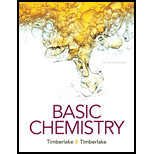
(a)
Interpretation:
The abbreviated electronic configuration for tin should be written.
Concept Introduction:
The distribution of electrons in atom into orbitals is said to be electronic configuration. The electronic configuration for every element present in the periodic table is unique or different.
The electronic configuration can also be written as abbreviated configuration. Abbreviated electronic configuration is defined as the electronic configuration of the forgoing or previous noble gas is replaced by writing the
(b)
Interpretation:
The abbreviated electronic configuration for cadmium should be written.
Concept Introduction:
The distribution of electrons in atom into orbitals is said to be electronic configuration. The electronic configuration for every element present in the periodic table is unique or different. Atomic number is equal to the number of protons, which is further equal to the number of electrons for neutral atom.
The electronic configuration can also be written as abbreviated configuration. Abbreviated electronic configuration is defined as the electronic configuration of the forgoing or previous noble gas is replaced by writing the symbol of element inside the square brackets.
(c)
Interpretation:
The abbreviated electronic configuration for selenium should be written.
Concept Introduction:
The distribution of electrons in atom into orbitals is said to be electronic configuration. The electronic configuration for every element present in the periodic table is unique or different. Atomic number is equal to the number of protons, which is further equal to the number of electrons for neutral atom.
The electronic configuration can also be written as abbreviated configuration. Abbreviated electronic configuration is defined as the electronic configuration of the forgoing or previous noble gas is replaced by writing the symbol of element inside the square brackets.
(d)
Interpretation:
The abbreviated electronic configuration for fluorine should be written.
Concept Introduction:
The distribution of electrons in atom into orbitals is said to be electronic configuration. The electronic configuration for every element present in the periodic table is unique or different. Atomic number is equal to the number of protons, which is further equal to the number of electrons for neutral atom.
The electronic configuration can also be written as abbreviated configuration. Abbreviated electronic configuration is defined as the electronic configuration of the forgoing or previous noble gas is replaced by writing the symbol of element inside the square brackets.
Want to see the full answer?
Check out a sample textbook solution
Chapter 5 Solutions
Basic Chemistry (5th Edition)
 ChemistryChemistryISBN:9781305957404Author:Steven S. Zumdahl, Susan A. Zumdahl, Donald J. DeCostePublisher:Cengage Learning
ChemistryChemistryISBN:9781305957404Author:Steven S. Zumdahl, Susan A. Zumdahl, Donald J. DeCostePublisher:Cengage Learning ChemistryChemistryISBN:9781259911156Author:Raymond Chang Dr., Jason Overby ProfessorPublisher:McGraw-Hill Education
ChemistryChemistryISBN:9781259911156Author:Raymond Chang Dr., Jason Overby ProfessorPublisher:McGraw-Hill Education Principles of Instrumental AnalysisChemistryISBN:9781305577213Author:Douglas A. Skoog, F. James Holler, Stanley R. CrouchPublisher:Cengage Learning
Principles of Instrumental AnalysisChemistryISBN:9781305577213Author:Douglas A. Skoog, F. James Holler, Stanley R. CrouchPublisher:Cengage Learning Organic ChemistryChemistryISBN:9780078021558Author:Janice Gorzynski Smith Dr.Publisher:McGraw-Hill Education
Organic ChemistryChemistryISBN:9780078021558Author:Janice Gorzynski Smith Dr.Publisher:McGraw-Hill Education Chemistry: Principles and ReactionsChemistryISBN:9781305079373Author:William L. Masterton, Cecile N. HurleyPublisher:Cengage Learning
Chemistry: Principles and ReactionsChemistryISBN:9781305079373Author:William L. Masterton, Cecile N. HurleyPublisher:Cengage Learning Elementary Principles of Chemical Processes, Bind...ChemistryISBN:9781118431221Author:Richard M. Felder, Ronald W. Rousseau, Lisa G. BullardPublisher:WILEY
Elementary Principles of Chemical Processes, Bind...ChemistryISBN:9781118431221Author:Richard M. Felder, Ronald W. Rousseau, Lisa G. BullardPublisher:WILEY





